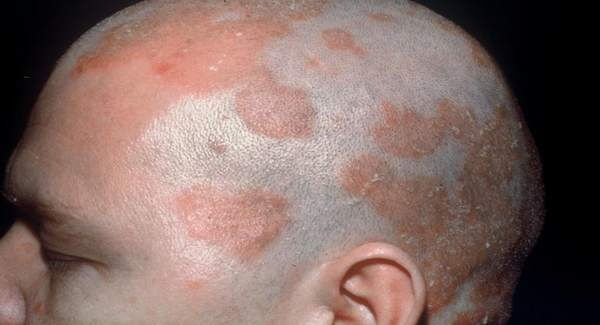What's in this article?
What is Seborrheic Eczema?
Seborrheic eczema is a very common skin condition. It is also known as seborrheic dermatitis. When infants develop this condition, it is known as cradle cap.
Seborrheic eczema is thought to have two chief causes. The first is overproduction of oil by the skin. The second is a yeast known as malassezia. It is found naturally in the skin’s oils and is believed to act as an irritant to those with the condition.
Although there is no cure, learning to recognize and eliminate triggers and developing a good skin care routine can help you manage the condition.
Symptoms of Seborrheic Eczema
Seborrheic dermatitis symptoms include:
- Skin flakes (dandruff) on your scalp, hair, eyebrows, beard or mustache
- Patches of greasy skin covered with flaky white or yellow scales or crust on the scalp, ears, face, chest, armpits, scrotum or other parts of the body
- Red skin
- Redness or crusting of the eyelids (blepharitis)
- Possibly itching or stinging
Risk of Seborrheic Eczema
Doctors are not sure why some people develop seborrheic eczema, while others do not. It does appear that your risk of developing it increases if one or more close family members also have the condition.
Other factors thought to increase risk include:
- obesity
- fatigue
- environmental factors (such as the weather)
- poor skin care
- stress
- the presence of other skin issues (such as acne)
- use of certain skin care products (in particular those with alcohol)
Finally, certain serious medical conditions may make it more likely that you will develop the skin condition. If you have had a stroke, suffer from HIV or Parkinson’s, or have sustained a head injury, you may have a greater likelihood of having seborrheic eczema.
Causes of Seborrheic Eczema
Doctors don’t yet know the exact cause of seborrheic dermatitis. But it may be related to:
- A yeast (fungus) called malassezia that is in the oil secretion on the skin
- An inflammatory response related to psoriasis
- The season, with episodes tending to be worse in early spring and winter
Home Treatment for Seborrheic Eczema
Dandruff shampoos are frequently used to treat seborrheic eczema on the scalp. You will usually need to use the product daily for optimal results. Follow all usage instructions on the bottle exactly. According to the Mayo Clinic, alternating between shampoos with different active ingredients may help if it seems like one stops working as well over time (Mayo).
Addition skin care measures that may help you manage this kind of eczema include:
- using over-the-counter antifungal and anti-itch creams
- using hypoallergenic soap and detergent
- thoroughly rinsing soap and shampoo off your skin and scalp
- shaving off your mustache or beard. Sometimes this eases symptoms.
- wearing cotton clothing that is breathable and lets air reach your skin
- wearing nontextured clothing to avoid irritating your skin
Cradle Cap
For infants with cradle cap, try the following daily routine:
- Loosen scales by massaging your baby’s scalp or using a soft-bristled brush.
- Wash your baby’s hair with a mild shampoo.
- Rinse hair and scalp thoroughly.
- Brush your baby’s hair with a clean, soft-bristled brush.
If it is difficult to loosen and wash off scales, massage your baby’s scalp with mineral or olive oil before shampooing.
Your child’s doctor may recommend medicated shampoo or lotion for severe or persistent cradle cap.
Risk factors of Seborrheic Eczema
A number of factors increase your risk of developing seborrheic dermatitis, including:
- Neurological and psychiatric conditions, such as Parkinson’s disease and Depression
- A weakened immune system, such as seen in organ transplant recipients and people with HIV/AIDS, alcoholic pancreatitis and some cancers
- Congestive heart failure
- Endocrine disease that leads to obesity, such as diabetes
- Some medications
- Scratching or otherwise damaging the skin on your face







